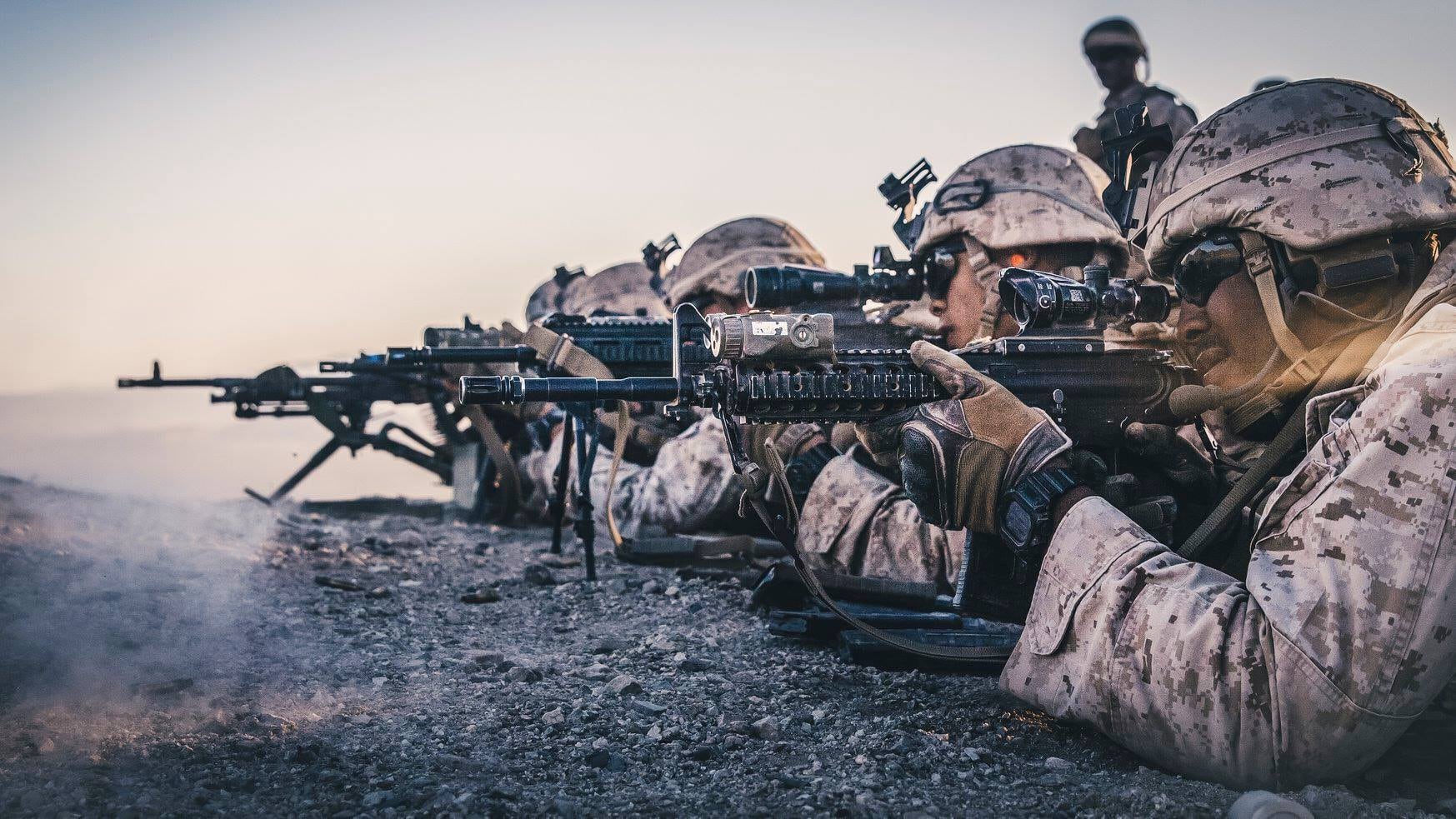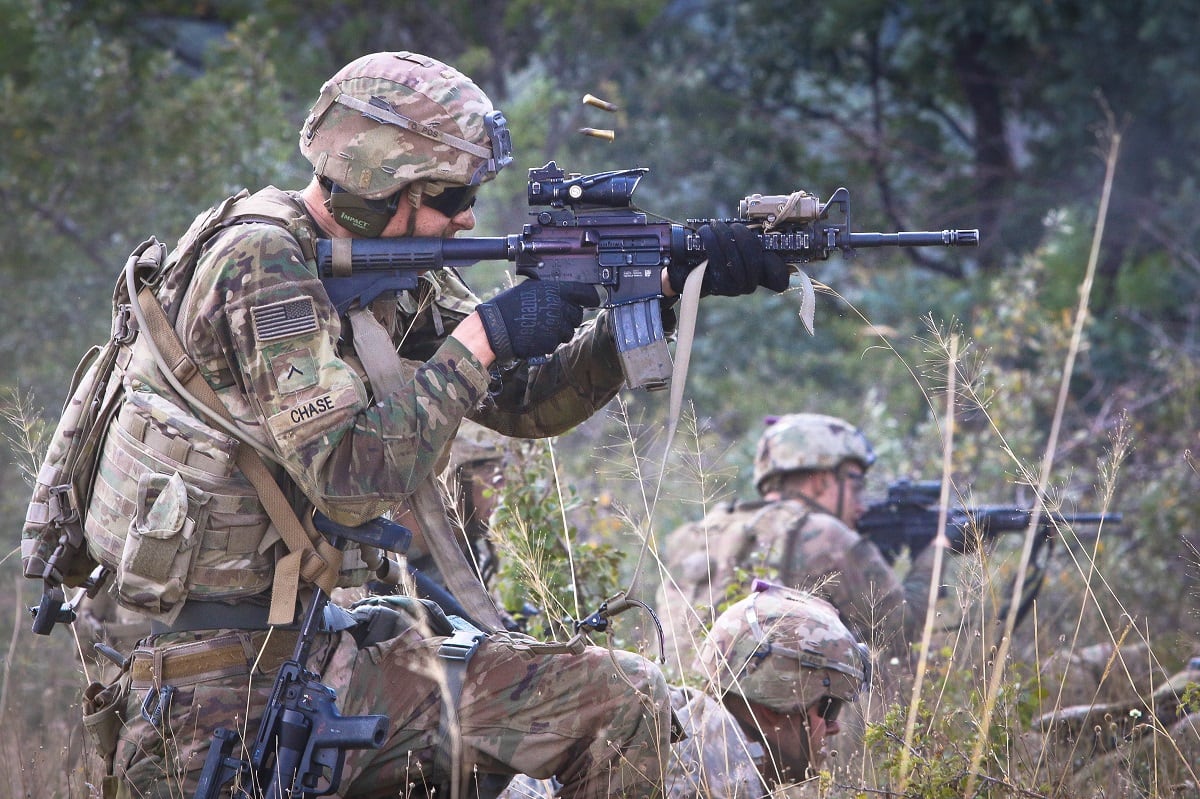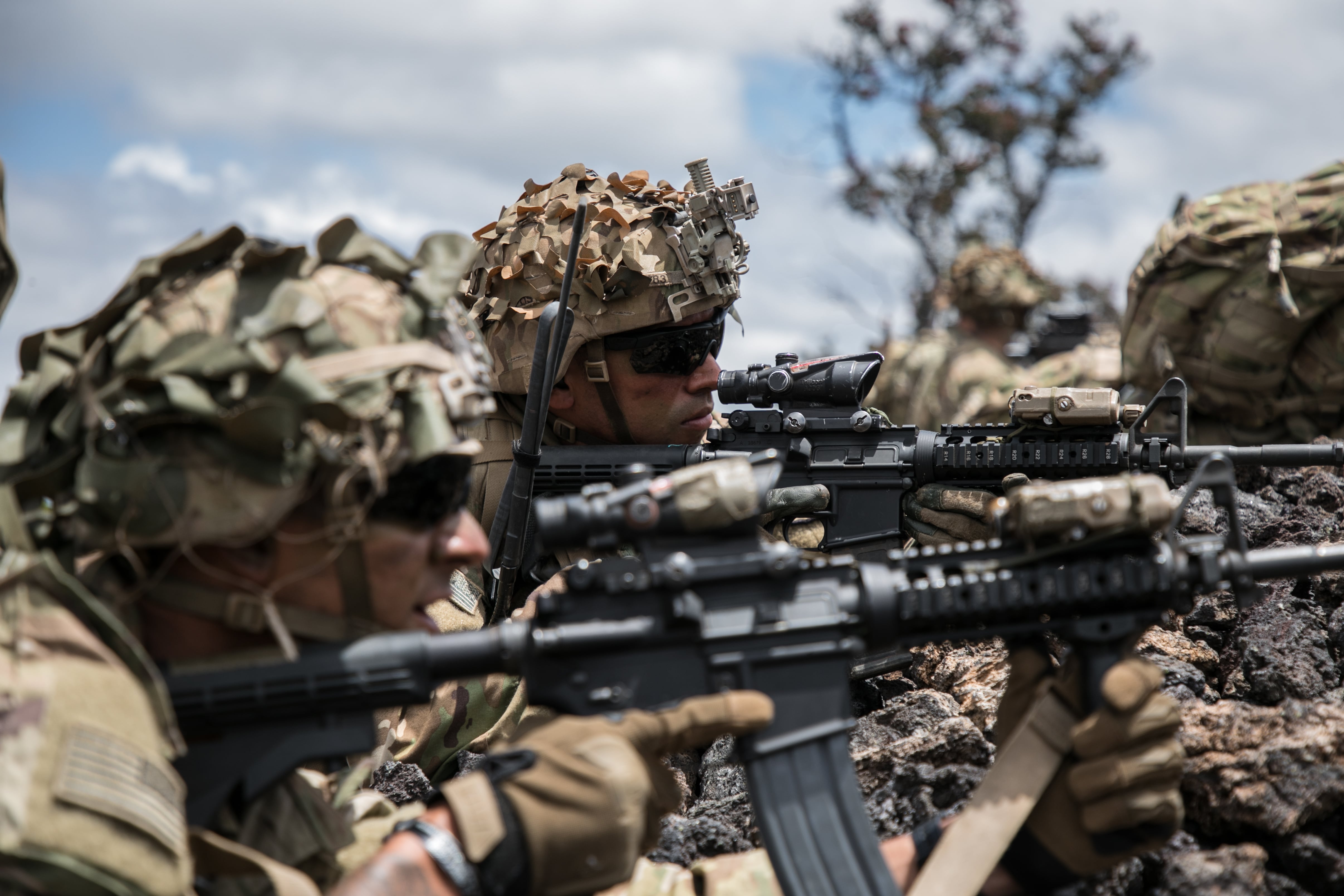By the end of this summer, the Army plans to pick three vendors to build prototypes of the weapons that will replace the M16/M4 and the Squad Automatic Weapon for both soldiers and Marines, both in a new, common cartridge.
In the coming weeks, officials will release the official “prototype opportunity notice” with detailed expectations of the new weapons family, including not only the new caliber but also what it wants from the weapons' fire control system.
Companies will then have between two and four months to submit their samples for Army officials at Program Executive Office Soldier, Crew Served Weapons to evaluate.
At the same time, submissions for a SAW replacement, which was part of an earlier effort that helped lead to this approach, will undergo test-firings in July. That will then close the previous prototyping.
Once officials select the three vendors in late summer, officials said, they are expected to have 27 months to mature and finalize the weapon.
That means the long-awaited replacement for the basic weapons at the core of Army and Marine squad firepower could be ready for troops by 2021.
That far outpaces what used to be the norm for acquiring new weapons, Lt. Col. Jason Bohannon, head of PEO Soldier, Crew Served Weapons, told Military Times in a recent interview. That was because the program was approved last year for rapid prototyping.
Bohannon said that allowed the program to “jumpstart” weapon and fire control development.
Otherwise, the simple requirements approval portion would have taken at least two years.
The testing on the first initiative from last year, the SAW replacement, allowed for what Bohannon called an “unprecedented dialogue with the small arms industrial base.”

For more than a decade, researchers and industry experts have advocated for an intermediate caliber replacement for the 5.56mm round. Some advocated for simply converting existing 5.56mm rifles to a 6mm caliber with upper receiver swaps.
The Army as a whole received a lot of criticism from experts in those areas for continuing on with the 5.56mm, even with enhanced round versions of the caliber.
But, Bohannon said that the Army had squeezed out advances not only in the round but also in the weapons platform of the M16/M4, which has seen hundreds of modifications since it first hit units more than half a century ago.
For true “leap-ahead” changes, Bohannon said, “You really had to take a systems approach.”
Less than a year ago, the search for a replacement caliber was being kept within the intermediate range, anything from 5.56mm to 7.62mm, the existing calibers used in small units.
Most saw something in the 6mm range as ideal, based on decades of ballistics research and advocacy.
The service narrowed in on the 6.8mm round, but it has kept how that round is delivered up to industry submissions — they’re looking for weight savings so polymer, cased telescope, and hybrid materials such as stainless steel, are all on the table.
But while it doesn’t get as much attention as the new round, the fire control system is likely as important to the new system.
For that, officials are expecting the submission to have three fire control capabilities built into one device — a laser range finder, ballistic computer and disturbed reticle.
Those are advancements that put basic infantry shooting on par with sniper equipment.
And they’re not the end of development.

The fire control will have to be compatible with the upcoming Enhanced Night Vision Goggle-Binocular, expected to field near the end of the year and with the Family Weapons Sights-Individual system, which includes thermal capabilities and Rapid Target Acquisition that allows troops to shoot around corners and fire quickly from the hip, if necessary.
Those capabilities are on a longer timeline, as tech evolves, mostly to avoid strapping too many accessories onto the weapon. To that end, they’ve built an open architecture system requirement into the fire control so that future features and hardware can work together, Bohannon said.
Originally, the Army was looking to start with a SAW replacement and work the rifle/carbine replacement afterward, but that changed with the most recent prototype notice.
Following that notice, Brig. Gen. Anthony Potts, who leads PEO Soldier, told Military Times that the new approach is to develop both along the same path, with the same round, so that designers can find the best fit for ammo in both weapons, much like existing M4s and Squad Automatic Weapons both fire the 5.56mm.
RELATED

The first prototype, which will see test firings of weapons systems in July, resulted in five companies being selected.
Those companies are:
- AAI Corporation Textron Systems
- FN America LLC (two prototypes)
- General Dynamics-OTS Inc.
- PCP Tactical, LLC
- Sig Sauer, Inc.
Though they won the right to participate in that first set of submissions and testing, it doesn’t mean any of them has a free pass into this next effort.
According to the draft prototype notice from October, once production begins, companies will be expected to build at least 200 weapons per month. Within six months of the award, they need to pump out 2,000 weapons a month within three years for a potential total order of 250,000 weapons systems, both NGSW-R and NGSAR, over a 10-year period.
That cashes out to $10 million the first year and an estimated $150 million a year for the higher production rate years.
Todd South has written about crime, courts, government and the military for multiple publications since 2004 and was named a 2014 Pulitzer finalist for a co-written project on witness intimidation. Todd is a Marine veteran of the Iraq War.





